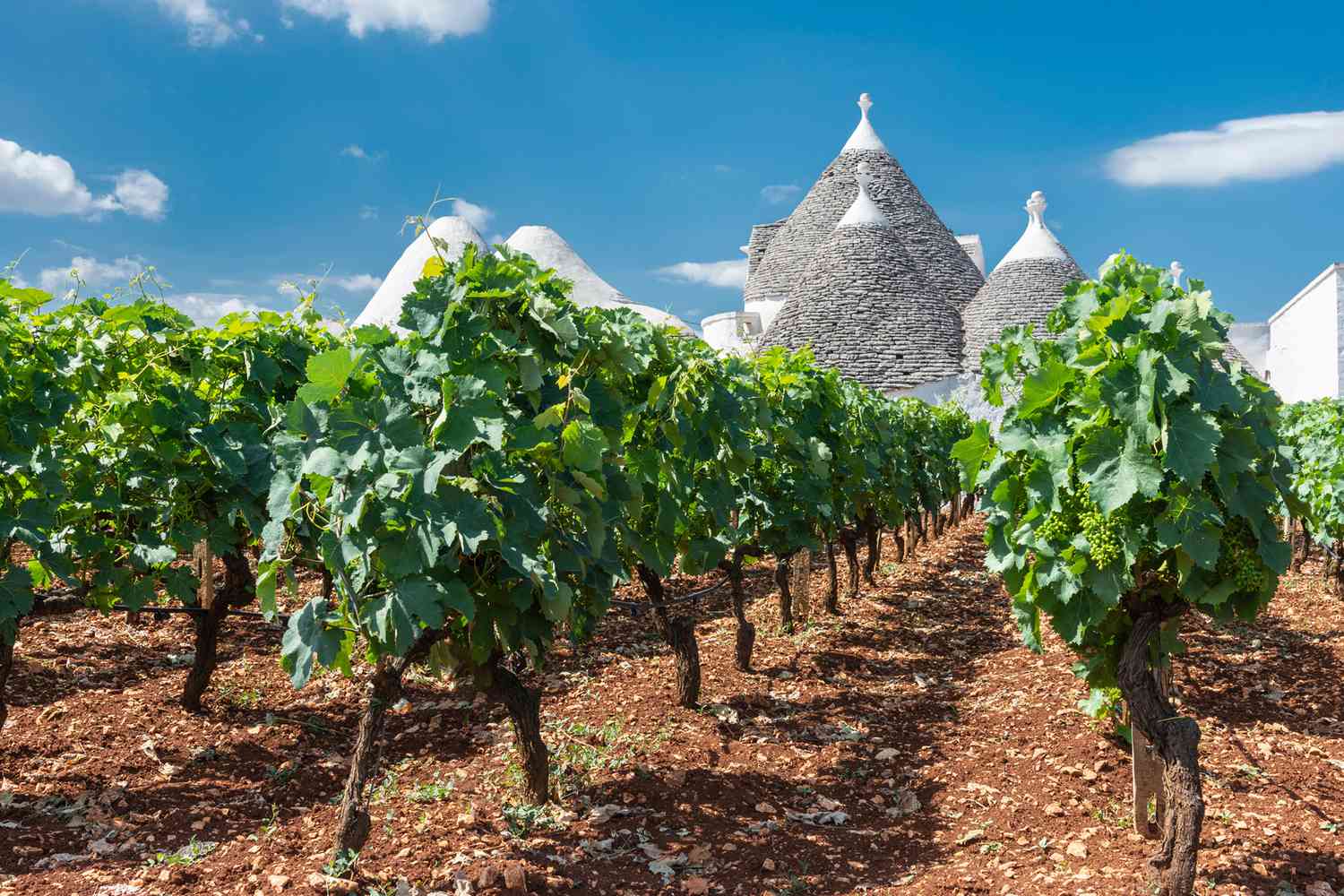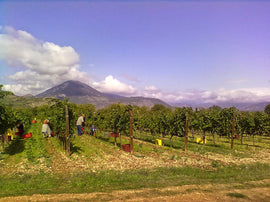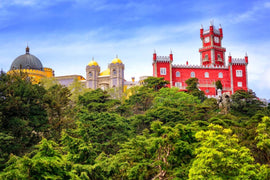In a sense, Puglia - our destination this month - might be Italy’s most influential region. Stepping out from the southeastern coast into the Adriatic and Ionian Seas, it’s invariably described “the heel” of the country’s reputed boot; remove it and Italy is a flat footed peninsula resembling no specific type of footwear - and, who knows, maybe the history of global fashion plays out quite differently? While I can’t find any concrete instance of Italy’s cobblers cribbing from the cartographers, the historical record suggests that semi-accurate maps predated high heels by an epoch or two. In 75 AD, Pliny the Younger was comparing Italy’s shape to an oak leaf, “longer than it is broad''; the first reference I can find to Italy looking like a boot doesn’t come until 1695, when the Thesauras Geographicus: A New Body of Geography, Or, A Compleat Description of the Earth describes it as “stretched forth toward the South, as it were a Peninsule, in the form of a Boot..." Clearly the intervening years presented ample opportunity for would-be designers to find an atlas and imagine new ways to elevate the local piedi.
Even if this isn’t how the future of shoes actually took shape, Puglia (Apulia in Latin) would still be responsible for a decent portion of Italy’s best quintessence. Geographically it’s mostly a flat plain and spectacularly fertile - hosting more than 50 million olive trees responsible for 40% of Italy’s (and 12% of the world’s) olive oil. Figs, wheat and almonds also grow in abundance here, and the regional cuisine is famed for spotlighting all this agricultural bounty. Puglia boasts ancient forests (Forestra Umbra in Gargano National Park) and ruins (the “white city” of Ostuni, its buildings coated with chalky limestone paint during the Plague for its antibacterial properties); the Baroque architectural splendor of Leccia (“the Florence of the South”); and a combined 500 miles of stunningly gorgeous Ionian and Aegean coastline that must be what people mean when they say “Ultramarine.” If and when I ever get to Italy, I am definitely going to Puglia.
As for the wine, there is a lot of it as you might expect: Puglia ranks 2nd, trailing only Veneto, in terms of vino per annum by volume. The primary red indigenous grapes are Negroamaro (which translates to “black bitter”) and Primitivo ( which is genetically identical to Zinfandel) and they generally produce full bodied and fruit forward wines due to the long, hot summer growing season. White wine production is smaller, but there are a decent amount of crisp, easy drinking whites made from local varietals like Verdeca, Bombino Bianco and Greco Bianco. In general, Puglian wines are regarded as solid everyday table wines; not particularly expensive, not terribly distinguished, but well made and good with food.
Our two selections this month are a little more interesting: the white wine comes from the new-to-me Fiano Minutolo grape, which was once known as Fiano Aromatico, and has been cultivated in Puglia since 1200. As its old name suggests, it is wonderfully aromatic, and also able to retain its acid and low alcohol even during the baking local summers. Masseria is one of a handful of wineries that has helped bring it back from virtual extinction in the last two decades. Though the selections for November will be made with an eye towards your holiday table, this bottling will make a solid Thanksgiving white as well.
The red is pretty much the polar opposite of last month’s light-red (technically rose) selection. Made from the Nero Di Troia (Black of Troy) grape, a indigenous Puglian varietal that dates back to the Romans, it is lush, spicy and full bodied. If possible, open an hour before serving.
|
Masseria Cuturi 1881, Segreto di Bianca, Fiano Puglia IGT 2023 |
|
|
Region: Puglia, Italy |
About the Winery: A perfect example of how the economy of the region is transforming today is this estate. Founded in 1881 after a marriage between a wealthy landowner, Tommaso Schiavoni Tafuri and the Countess Bianca Sabini di Altamura, who brought some cut of Primitivo grapes as dowry. We are in the territory of Maduria, in Taranto province, the Primitivo’s cradle. Masseria Cuturi is a unique 270 hectares property located in Manduria, composed of more than 30 hectares of planted Primitivo, Negramaro and Fiano grape, extending to 100 hectares completely dedicated to native Puglia varieties. Part of the estate is dedicated to ancient olive trees, some of them about 500 years old. Those olive trees are the proud of the region but today are under siege but the deadly Xylella fastidiosa bacterium, know to us as Pierce’s disease. This estate went through several owners. In 2015, Camilla Rossi-Chauvenet, an successful entrepreneur in the wine sector from Valpolicella, Veneto, bought it with the idea to give a prominent place to the wine but also to valorize the entire property opening to tourist that can rent rooms in the old farmhouse, visit the cellar and the many small towns around as the sandy beaches and clear water near by. Masseria is the term used in south Italy to indicate the farmhouse itself but also the estate as whole. About the Winemaking: The hot Mediterranean climate, persistent sunshine and occasional sea breezes make for a near-perfect environment for viticulture. Extraordinary soil composed of cretaceous limestone under layers of iron-rich quaternary deposits. Valentino Ciarla has the right elements to create wines that are the expression of this terroir. Sustainable and organic practices are Valentino tools in the vineyard and in the cellar.Harvest time for Segreto di Bianca is end of August. Maceration, malolactic fermentation and aging period of three months all taking place in stainless steel vats. Tasting Notes: Intense aromas of citrus fruits. Mediterranean herbs (thyme, helichrysum) and yellow prunes. Hints of salt. The palate is rich and fruity, redolent of yellow plums with a crisp acidity that moderates the aromaticity of the varietal. . |
|
Winemakers: Valentino Ciarla |
|
|
Price per bottle / Price per case $23.99 $259.10 |
|
|
Suggested Food Pairing: Seafood risotto, orecchiette pasta with rabe, grilled vegetables. |
|
|
Podere 29 Gelso D’Oro Nero di Troia Puglia IGT 2021 |
|
|
Region: Puglia, Italy |
About the Winery: After WWII, returning soldiers were given plots of land to rebuild their lives with. Plot 29, generations later, gave birth to these organic vineyards along the northern coast of Puglia. Giuseppe Marrano's love of his homeland, passed down from his father and grandfather, is displayed in his convictions towards a natural and sustainable approach, utilizing biodynamic principals, all to celebrate the indigenous varietals of Puglia. A unique blend of four soils, dominated by clay and sand, allow these wines to express their native characteristics to be enjoyed by all. About the Winemaking: From 10 year old vines avg. After night hand harvest in mid September and gentle pressing, the grapes are placed for the first refinement in steel tank for 12 months, then f in wood barriques 8 months and then in the bottle for another 6-8 months before release. Tasting Notes: Intense ruby red, it has aromas of black berry fruit with subsequent tones of cocoa, cinnamon, cumin and juniper. In the mouth it is enveloping, full, full-bodied, rightly tannic, with already softened and velvety tones and a balanced and very long finish. |
|
Winemakers: Guiseppe Marrano |
|
|
Price per bottle / Price per case $37.99 $410.30 |
|
|
Suggested Food Pairing: spicy first courses, roasted and grilled red meats, game, mature cheeses, hearty stews and chocolate. |
|
- 1.5 kilos 3 lbs lamb (see Notes), cut into chunks
- 1 medium onion thinly sliced
- 750 g 1-1/2 lbs peas, fresh or frozen
- White wine
- Olive oil
- Salt and pepper
To finish the dish:
- 2-3 eggs
- 25 g 1 oz freshly grated Pecorino romano cheese
- A few sprigs of fresh parsley minced
Instructions
- In a braiser or sauté pan large enough to hold all the lamb, sauté the sliced onion in a olive oil over a gentle flame until tender and translucent. Raise the heat a bit and add the lamb pieces, turning them so they brown on all sides, taking care so the onion doesn't burn. Season with salt and pepper as you go.
- Add a splash of white wine, give the pan a stir, and let the wine cook off. Add a ladleful of water, stir again, and cover tightly. Turn the heat way down, so that the lamb braises gently. Let it cook this way until the meat is perfectly tender, usually about 45 minutes. The liquid should have reduced considerably but not completely evaporated; check on the meat from time to time; add more water if needed to keep things moist.
- If using fresh peas: Shell the peas and add them about halfway through the braise, so they, too, will be perfectly tender when the meat is.
- If using frozen peas: Add them when the meat is almost tender, along with another ladleful of water if needed, and let them braise with the meat for the last 5-10 minutes, until they, too, are tender and have lost a bit of their bright green color.
- To finish the dish, beat the eggs and grated cheese together (and if you like, a bit of minced parsley) in a bowl. Take the pan off the flame entirely, and pour over the egg and cheese mixture, and mix it well but gingerly with the lamb and peas, turning until the eggs have set enough to form a creamy sauce. Serve immediately.





